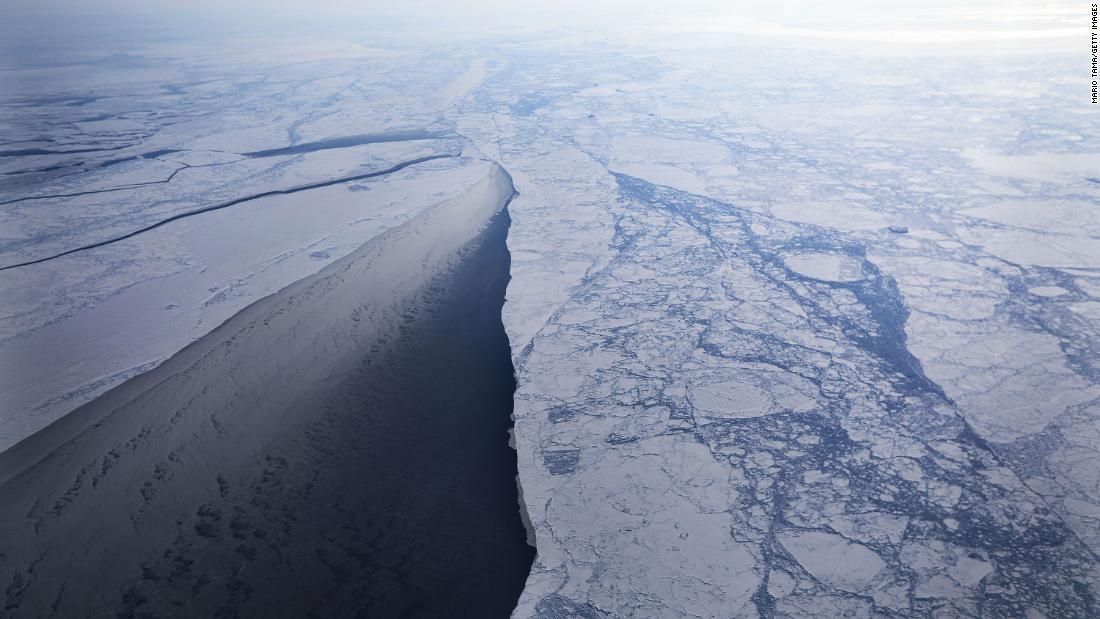[ad_1]
The report issued Monday by the UN Intergovernmental Panel on Climate Change (IPCC), says the planet will reach the crucial threshold of 1.5 degrees Celsius (2.7 degrees Fahrenheit) above pre-industrial levels by as early as 2030, precipitating the risk of extreme drought, wildfires, floods and food shortages for hundreds of millions of people.
The date, which falls well within the lifetime of many people alive today, is based on current levels of greenhouse gas emissions.
“This is concerning because we know there are so many more problems if we exceed 1.5 degrees C global warming, including more heatwaves and hot summers, greater sea level rise, and, for many parts of the world, worse droughts and rainfall extremes,” Andrew King, a lecturer in climate science at the University of Melbourne, said in a statement.
Global net emissions of carbon dioxide would need to fall by 45% from 2010 levels by 2030 and reach “net zero” around 2050 in order to keep the warming around 1.5 degrees C.
Lowering emissions to this degree, while technically possible, would require widespread changes in energy, industry, buildings, transportation and cities, the report says.
“The window on keeping global warming below 1.5 degrees C is closing rapidly and the current emissions pledges made by signatories to the Paris Agreement do not add up to us achieving that goal,” added King.
Consequences of past inaction
The report makes it clear that climate change is already happening — and what comes next could be even worse.
“One of the key messages that comes out very strongly from this report is that we are already seeing the consequences of 1 degree C of global warming through more extreme weather, rising sea levels and diminishing Arctic sea ice, among other changes,” said Panmao Zhai, co-chair of IPCC Working Group I.
Even if warming is kept at or just below 1.5 degrees C, the impacts will be widespread and significant.
Temperatures during summer heatwaves, such as those just experienced across Europe this summer, can be expected to increase by 3 degrees C says the report.
Coral reefs will also be drastically effected, with between 70 and 90% expected to die off, including Australia’s Great Barrier Reef.
Countries in the southern hemisphere will be among the worse off, the report said, “projected to experience the largest impacts on economic growth due to climate change should global warming increase.”
The report underlines how even the smallest increase in the base target would worsen the impact of recent natural disasters.
“Every extra bit of warming matters, especially since warming of 1.5 degrees C or higher increases the risk associated with long-lasting or irreversible changes, such as the loss of some ecosystems,” said Hans-Otto Pörtner, Co-Chair of IPCC Working Group II.
‘Possible with the laws of chemistry and physics’
To limit global warming to 1.5 degree C is “possible within the laws of chemistry and physics,” said Jim Skea, co-chair of IPCC Working Group III. “But doing so would require unprecedented changes.”
The report cites specific examples of how impacts of global warming would be lessened with the 1.5 degrees C increase, compared to the 2 degrees C increase:
- Global sea levels would rise 10 cm lower by 2100.
- The likelihood of an Arctic Ocean free of sea ice in summer would be once per century, instead of at least once per decade.
- Coral reefs would decline by 70% to 90% instead of being almost completely wiped out.
In Paris, the world’s governments tasked the IPCC with preparing this special report to detail the impacts that climate change of 1.5 degree C will bring, what will be required to prevent further warming and what mitigation and adaptation options are available for countries to deal with these impacts.
More than 90 authors from 40 countries were involved in leading the report, helped by 133 contributing authors. The report pulls together the current understanding of the scientific community on climate change and includes citations of more than 6,000 peer-reviewed scientific articles and studies.
[ad_2]
Source link



